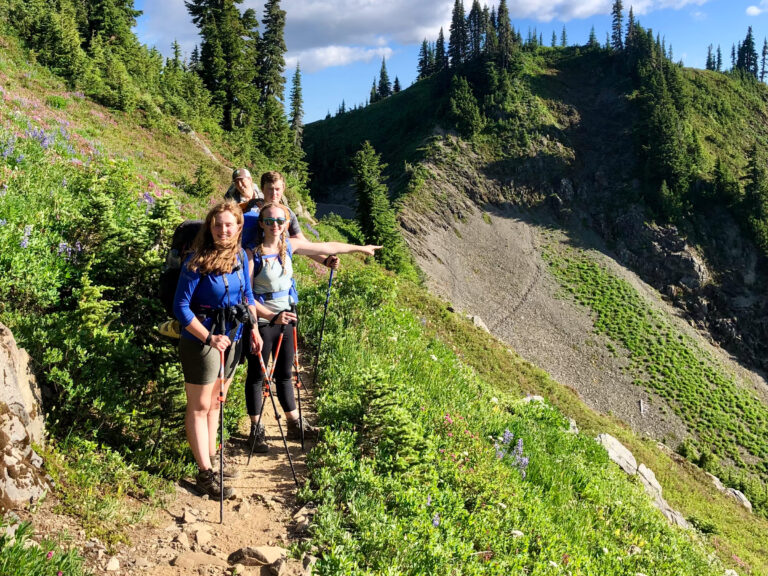RIDING YOUR BIKE in the winter can be a lot of fun. Like any other winter activity, fun starts turning to misery and suffering quickly when you get cold. If you go fast, you are generating a higher wind chill. When you climb or otherwise work hard you are heating up and likely sweating. If you coast down a long hill, you’re resting (not generating heat) while you create a higher wind chill. And if you’re wet with sweat, coasting can be miserably cold.
Like all bike-related stuff, one clothing solution doesn’t work for all people. After riding through a few winters I’ve found a few specific products that work great for me, and some general principles that seem to hold up year-over-year. So if you’re just starting out, you may find this column useful as you begin to explore what works for you.
It seems all cold weather clothing advice starts with the concept of layering. For cycling this is especially important. With lots of thin layers you can regulate by adding and subtracting layers on longer rides.
For the upper body, socks, hat, and neck gaiter, I’m a wool guy. I’ve tried the highly technical fabrics that promise to “wick away” the moisture. I’ve not had good luck. These fabrics are always made from some exotic mixture of plastic, which leaves me cold, clammy, and extra stinky after a moderate ride.
Wool today is not the uncomfortable scratchy punishment it was 10 years ago. There are lots of companies making thin, comfortable merino wool layers. I live in Icebreaker or SmartWool t-shirts year round, even on the hottest days of the summer. Wool naturally repels water and maintains its warmth even when it’s wet. I still get clammy and sweaty on a hard ride with wool, but I’m not cold. And I don’t stink nearly as much as I do with poly materials.
Stay away from cotton. When it gets wet it clings to your skin and seems to conduct the heat out of your body. I would venture to say that cotton is probably a dangerous fabric to wear next to your skin for long and vigorous rides in sub-freezing weather.
After I layer on 2-4 thin layers of wool shirts, I’ll wear a shell to block the wind and rain. It’s important to have a shell that zips up and down easily. You’ll be wearing gloves or mittens, so this criterion is especially important. You don’t want fussy buttons or Velcro tabs. Even poorly designed rainflys over the zippers can make a jacket a pain to use.
My favorite value shell is the O2 rain jacket. It’s cheap (about $30) and breathes better than any other rain jacket that I’ve tried. It wads up pretty small so you can always have it in your bag. It is fragile, so be gentle with it.
For a fancy jacket, I can’t think of a better one than the Ibex Dash Hybrid. It’s out of production this year, but according to Terry at Ibex, they will have it back in their line-up next year. The Dash Hybrid has a weather-proof wool/poly shell in the front to block the wind, snow, and rain, and a merino back panel that maintains warmth. The back wool panel also allows the excess heat to burn off. It’s a genius jacket and worth every penny. It’s the one piece of cycling clothing I can unreservedly recommend to anyone looking for the best-in-class cycling jacket. Other cycling jackets use a similar design, but none that I know of use wool, which breathes better than any poly I’ve tried.
For legs, I wear poly long underwear as the base layer. I used to wear wool, but I wear out the seats too quickly in my underwear to justify spending $50+ on long wool underwear. If you wear cycling shorts, you may have a way around this.
Over the long undies, I wear either thrift store wool slacks or some other poly technical pant. Ibex also makes a Dash Hybrid pant that is wonderful, but a bit too technical and “bikey” looking for me to be wearing around town.
Toes and fingers are especially susceptible to the cold when you cycle. The best cold-weather mittens I’ve used are lobster claw-type mittens. I’m sure you can spend a ton of money on serious mountaineering or snowmobile mittens to stay warm. Whatever it takes, it’s worth it.
For feet, boots are ideal if you don’t clip into your pedals. I think waterproof hiking boots with room for a couple layers of thin wool socks make the most sense. They’re not as heavy as winter boots, so they’ll keep you dry and warm while being easy to get around in. If you must have foot retention, then check out PowerGrips, which are like an abbreviated version of a toe clip that can fit over wide shoes and most boots.
Finally, pack some chemical foot warmers in your commuting bag. These cheap and effective little packets of heaven can make all the difference when you’ve miscalculated or have an unexpected turn of events.
John Speare grew up and lives in Spokane. He rides his bike everywhere. Check out his blog athttp://cyclingspokane.blogspot.com.













